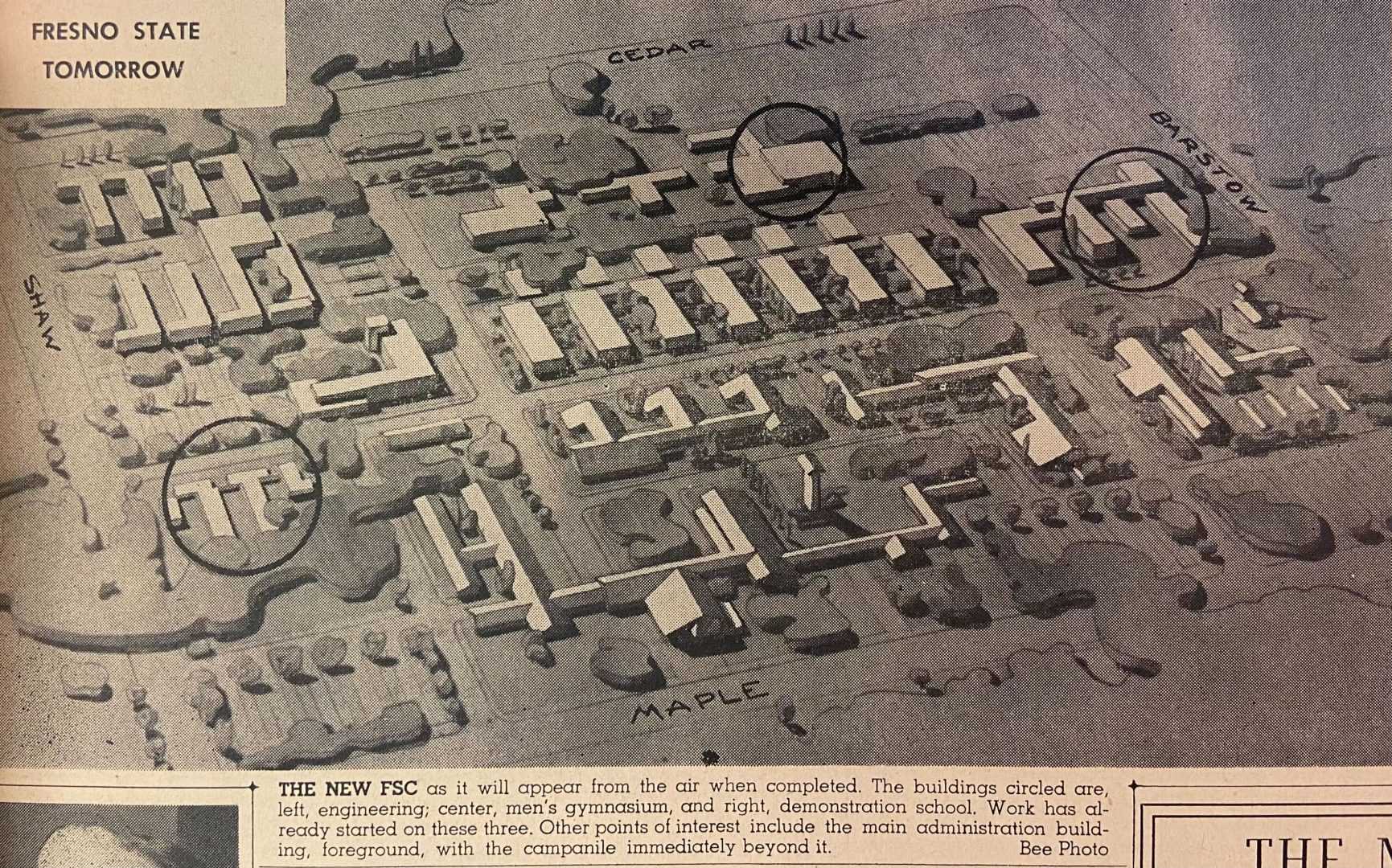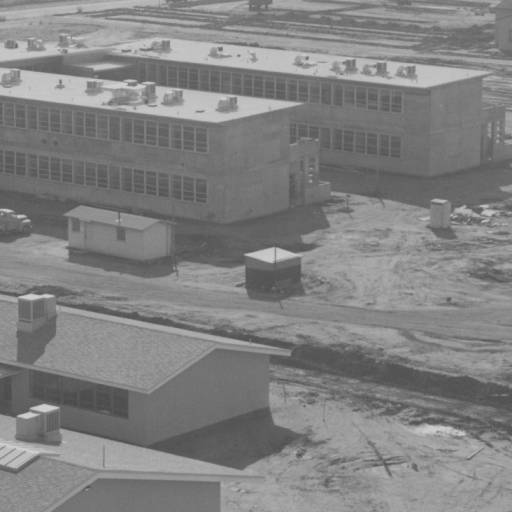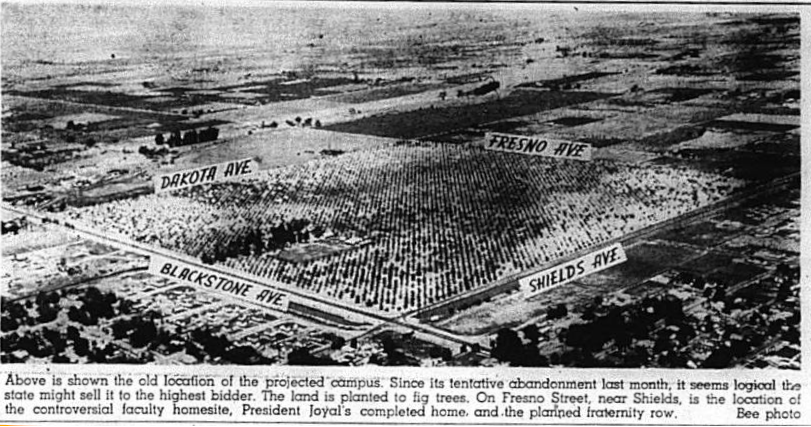For the last installment of the Collegian Centennial feature story series, this article covers the origins of the Fresno State campus better known as “The New Campus.”
The Central Valley’s indigenous past
Prior to the arrival of Spanish explorer Juan Rodriguez Cabrillo in San Diego Bay on Sept. 28, 1542, indigenous Americans were prominent powers in the current state of California, according to California National Park Services.
Within the Central Valley alone, dozens of tribes existed with many of them gathering around the now extinct Tulare Lake, which spanned roughly 33 miles in length. Some of the tribes included the Tejon Indian Tribe, Chukchansi Indians, Tule River Tribe, Yokuts Tribe and Monache.
The influence of the indigenous tribes in California began to decline in the early 1900s in what Santa Rosa Rancheria tribal historian Raymond “Koodie” Jeff described as a “racial genocide” perpetrated by the Californian government, he wrote for the Tachi Yokut Tribe website
First, former California Gov. Peter Burnett declared the beginning of the extermination of the indigenous peoples of California on Jan. 6, 1851, in a State of the State address before the California Senate and the California Assembly.
“That a war of extermination will continue to be waged between the races until the Indian race becomes extinct must be expected. While we cannot anticipate this result but with painful regret, the inevitable destiny of the race is beyond the power or wisdom of man to avert,” Burnett said.
The state issued a 25 cents bounty per indigenous person killed in 1856 and raised the price of the bounty again to $5 in 1856. According to Jeff, 99% of the indigenous Yokut and Tatch population were killed while the bounties remained in effect.
Twenty-four years later, the Central Pacific Railroad founded the city of Fresno, according to the Fresno Planning and Development Department. Two years later the city became a recognized county seat in 1874 and officially incorporated in 1885.
Creation of “The new campus”
The Fresno State Normal School was established in 1911 at University and North Van Ness avenues. Many of the school’s buildings still exist today under the banner of Fresno City College.
Normal schools were educational institutions that taught future teachers of California subjects like curriculum and the methods of teaching of academic subjects better known as pedagogy, according to the California State University.
According to the Fresno State website, the heavily emphasized education formally became a teacher’s college by 1921 and eventually offered advanced technical degrees by the late 1940s.
The university campus slowly expanded over the years with three university presidents taking the reins over a 39-year period. The past Fresno State College presidents were Charles L. McClain (1911-27), Frank W. Thomas (1927-48), and Arnold E. Joyal (1948-64).
With the growing need of the population, the Board of Trustees, the state of California and Joyal decided it was time to expand the university to anticipate the growing accessibility of higher education.
According to the United States Census Bureau, Fresno’s population reached 60,685 in the 1940s.
According to Joyal, the site of the new campus totaled 160 acres, and it was acquired in March 1948, with much of the bids for construction of the first four buildings taking place at the end of December.
Due to an unknown complication, the negotiations of “The New Campus” led to the relocation to a new plot of land located on Shaw and Cedar avenues, where the campus presides to this day.


Bottom: An aerial photo of the Fresno State College campus after a couple years of construction. (Edward Lopez/The Collegian)
“The parties to the argument state, city, county and landowners found it difficult to agree, so, to make a long story short, the state decided to relocate the whole project. Now we are in the process of acquiring another site (800 acres), three miles further out of the city,” Joyal said in his 1950 New Year’s letter.
According to The Fresno Bee, the facility’s total cost was approximately $15 million. Today, it would cost over $183.5 million when adjusted for inflation, according to the U.S. Bureau of Labor Statistics.
The groundbreaking ceremony was attended by dignitaries from the state and local governments as well as notable members of the public, many of whom eventually received their names on future buildings.
The Building Names
Currently, 12 buildings on campus bear the names of individuals related in some way to Fresno State. Three of the former administrative buildings on campus bear the names of the first three university presidents which are McLane Hall, the Frank W. Thomas Building and Joyal Administration Building.
Buildings with the names of notable citizens include former Fresno Mayor Frank Andrew Homan (1937-1941) and Phebe Conley, the mother of the famous journalist James B. McClatchy.
As of recently, two buildings on campus bear the names of donors, that being Bill Lyles and Lynda and Stewart Resnick, with both parties donating $10 million each to the university.
Assistant professor Leece M. Lee-Oliver, attributed building names as a trend taking place across the country in recognizing politically prominent leaders.
Lee-Oliver noted that in the case of universities, the names on the buildings often reflected those who had access to education at the time, which is in part why we have building names such as the Henry Madden Library.
In light of discussions to potentially rename the Henry Madden Library, Lee-Oliver recommends that the administration view the public sphere as an area of shared experiences through diverse representations if it wants to begin the process of healing old wounds.
“When we are affronted by oppressive figures, it is harmful to the spirit of people in myriad ways. We should also retain the knowledge of our collective histories so that we understand, and can study the future, how systems of oppression operate and how social justice responses enable us to reclaim dignity, cultural diversity and our rightful place in the human social world,” Lee-Oliver said.

agricultural and mechanics building (bottom) in the 1950s. (Edward Lopez/The Collegian)




